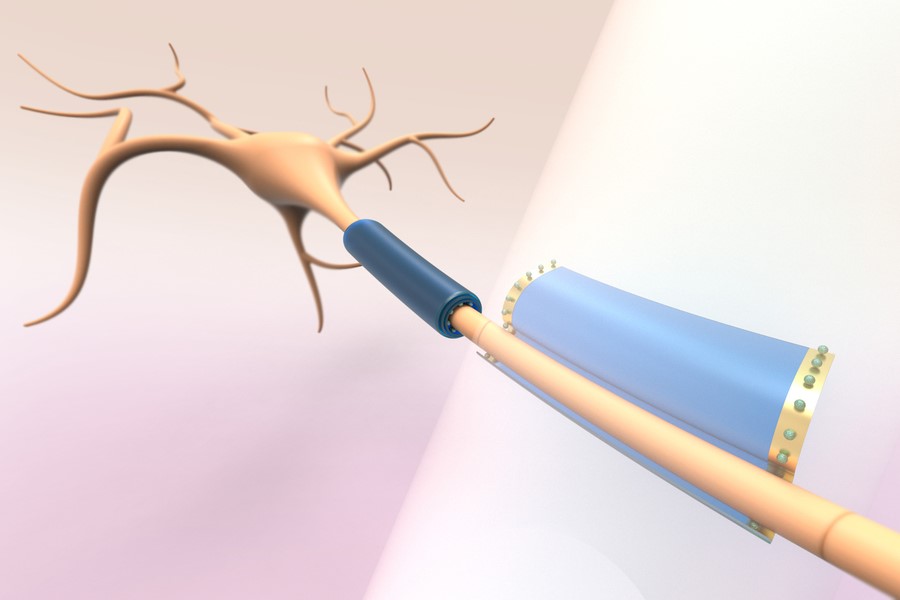Cellular 'Wearable' Devices
MIT researchers have developed wearable, battery-free devices that can interact with individual cells, similar to how smartwatches monitor our body's processes. These soft, polymer-based devices are designed to gently wrap around neurons, including axons and dendrites, without causing damage. Actuated wirelessly with light, the devices can measure or modulate a neuron’s electrical and metabolic activity at a subcellular level, offering a new way to probe brain function or potentially restore brain activity.
These wireless, free-floating devices could eventually be injected into the body and activated noninvasively using light. By adjusting the light's intensity, researchers could control how the devices wrap around cells, allowing precise interaction with neurons. For example, the wearables could enfold axons, which transmit electrical signals, potentially aiding in the restoration of neuronal function in conditions like multiple sclerosis. Over time, these devices could be combined with other materials to form miniature circuits capable of measuring and modulating the activity of individual cells.

Figure 1. Cell-Targeting Wearable Devices
“The concept and platform technology we present here serves as a foundational step, opening up vast possibilities for future research,” says Deblina Sarkar, the AT&T Career Development Assistant Professor at MIT Media Lab and Center for Neurobiological Engineering, and senior author of the paper. Sarkar is joined by lead author Marta J. I. Airaghi Leccardi, a former MIT postdoc now a Novartis Innovation Fellow, along with MIT postdoc Benoît X. E. Desbiolles, former undergraduate researcher Anna Y. Haddad ’23, and graduate students Baju C. Joy and Chen Song. Figure 1 shows Cell-Targeting Wearable Devices.
Gently Encasing Cells
Brain cells have intricate structures, making it challenging to develop bioelectronic implants that can tightly conform to neurons or their processes. For example, axons are long, slender extensions of neurons with varying lengths and curvatures, and they must be handled delicately because they are fragile.
To address these challenges, MIT researchers developed thin-film devices made from a soft polymer called azobenzene, which can conform to and encase cells without causing damage.
When exposed to light, the azobenzene material undergoes a transformation that causes it to roll up, enabling it to wrap around cells. The researchers can control the direction and diameter of this rolling process by adjusting the intensity, polarization, and shape of the light.
These thin films can form microtubes with diameters smaller than a micrometer, allowing them to gently and securely wrap around even the most curved axons and dendrites.
"You can precisely control the rolling diameter by tuning the light energy, and stop once the desired size is reached," explains Sarkar.
The team also explored various fabrication methods to create a process that is scalable and doesn’t require the use of a semiconductor clean room.
Creating Tiny Wearable Devices
MIT researchers developed a method to create tiny, battery-free wearable devices made from a soft polymer called azobenzene, which can wrap around neurons without causing damage. These devices, actuated by light, can mimic myelin, the insulating layer around axons, potentially restoring function in diseases like multiple sclerosis. The team demonstrated their biocompatibility and scalability, using a stamping process to mold thousands of microscopic devices. This breakthrough opens possibilities for creating neural interfaces that can modulate electrical activity and integrate sensors for treating brain diseases.
Source: MIT News
Cite this article:
Janani R (2024), Cellular 'Wearable' Devices , AnaTechmaz, pp.1038

